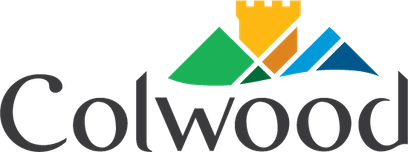The City of Colwood sits on the ancestral lands of Teechamista and the Lekwungen-speaking people now known as the Songhees and Xwsepsum Nations.
We are honoured to have the opportunity to build strong working relationships with local Nations based on learning, openness, humility and respect.
We endeavor to walk softly on these ancestral lands of the Xwsepsum and Songhees families.
Lekwungen (Songhees)
Xwsepsum (Esquimalt)
Pronunciation
(This information is courtesy of Royal Roads University.) It can be intimidating to say words we don’t know how to pronounce in any language. It’s also not uncommon for immigrant-descendants and immigrants to worry that they might offend Indigenous Peoples if they say a Nation or place name wrong. Our Heron People tell us that they appreciate it when people try. They also recommend asking someone who knows how to say the names the way community members do, especially an Indigenous person who is from the place.
Nothing replaces hearing these words spoken by members of these communities, but here is a pronunciation guide for our local Nations:
- Songhees (song-eez)
- Xwsepsum (ko-sap-sum)
- Lekwungen (lekwun-gen)
- Pacheedaht (pa-chee-dat)
- Pauquachin (paw-kwi-chin)
- Scia’new (chee-a-new)
- Tsartlip (sart-lip)
- Tsawout (say-out)
- Tseycum (say-come)
Relationship building with local Nations
How is Colwood working to advance truth and reconciliation? Five Calls to Action for Municipal Government
In order to redress the legacy of residential schools and advance the process of reconciliation, the Truth and Reconciliation Commission of Canada created 94 Calls to Action. The five specific actions municipal governments are encouraged to take include:
#43 ... to fully adopt and implement the United Nations Declaration on the Rights of Indigenous Peoples as the framework for reconciliation.
#47 ... to repudiate concepts used to justify European sovereignty over Indigenous peoples and lands, such as the Doctrine of Discovery and terra nullius, and to reform those laws, government policies, and litigation strategies that continue to rely on such concepts.
#57: ...to provide education to public servants on the history of Aboriginal peoples, including the history and legacy of residential schools, the United Nations Declaration on the Rights of Indigenous Peoples, Treaties and Aboriginal rights, Indigenous law, and Aboriginal-Crown relations. This will require skills-based training in intercultural competency, conflict resolution, human rights, and anti-racism.
#75: ...to develop and implement strategies and procedures for the ongoing identification, documentation, maintenance, commemoration, and protection of residential school cemeteries or other sites at which residential school children were buried. This is to include the provision of appropriate memorial ceremonies and commemorative markers to honour the deceased children.
#77: ...to work collaboratively with the National Centre for Truth and Reconciliation to identify and collect copies of all records relevant to the history and legacy of the residential school system, and to provide these to the National Centre for Truth and Reconciliation.
What do Colwood kids learn about Indigenous history and culture?
All schools in School District 62 include Indigenous Education as part of the curriculum. The Na'tsa'maht Indigenous Education Program at Royal Bay Secondary School offers students experiences that deepen understanding of Indigenous history, experience and culture. The learning that comes from being guided through activities by Indigenous teachers and elders is about much more than the activity itself. Students learn about living in harmony with the land and the purpose and meaning behind practices like cedar harvesting and weaving, drum making, native plant gardening, traditional dance, crafting, cooking and more.
Read more about Na'tsa'maht Indigenous Education
Indigenous Cultural Practices visible in Colwood
Latoria Creek Park and Havenwood Park are sometimes used by local Elders for the traditional protocol of Cedar Harvesting. This can be a wonderful learning opportunity for students.
Recently, local elders Jo-Ina Young (Metis Nation), Jackie Planes (T-Sou-ke), Henry Chipps (Scianew), and Rick Peter (Cowichan) spent the day with teachers from across the region sharing their knowlege of this cultural practice. Guided by the Elders, teachers harvested and prepared two pulls of bark. The Elders will use this bark throughout the school district to teach students about the many important items that can be created using woven cedar, including mats, headbands, bracelets, and baskets as well as medicine.
Cedar Harvesting is a vital cultural practice on these territories and has been since Time Immemorial. When harvested in a good way, the Cedar trees will continue to grow and thrive, however they will always retain the cultural markings. These are referred to as Culturally Modified Trees. As visitors walk up the trail at Latoria Creek Park, they might notice these marked trees which serve as a visual reminder of the connection and kinship Indigenous peoples have with this land and the gratitude we feel for the gifts the trees give us.
Watch the video Sharing the sacred uses of Cedar trees created by Royal Roads University featuring Scia'new Elder Henry Chips and Raymond (Rick) Peter Sit-a-luk (Khowutzun) are Role Models for Sooke School District 62. They share a few sacred uses of the Cedar tree to Indigenous Peoples of the West Coast.
Hych'ka to the Elders from local nations for sharing their vital teachings and knowledge.
